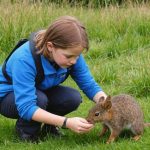Understanding Cognitive Decline in Senior Dogs
Cognitive decline in senior dogs is a condition marked by a gradual loss in mental acuity, akin to dementia in humans. Signs often appear in breeds like Australian Cattle Dogs as they age. Symptoms can include disorientation within familiar settings or inability to remember routines.
Spotting these early is crucial. Intervention when symptoms first arise can slow progression and help manage the condition. Noticing changes, like increased anxiety or altered sleep patterns, can be key indicators of cognitive decline. Consulting with a vet for early recognition is important for effective management.
A lire également : Elevate your dog's health with fresh, nutritious meals
It’s essential to differentiate between normal aging and genuine cognitive decline. While occasional forgetfulness or confusion can occur naturally as dogs age, more profound symptoms might suggest canine dementia. Unlike normal signs of aging, cognitive decline can severely affect the quality of life, prompting behavioral changes.
Understanding these distinctions assists in appreciating the importance of targeted treatments. Providing mental stimulation, a consistent routine, and possibly medication can contribute to enhancing life quality for affected senior dogs.
Avez-vous vu cela : Effective Strategies to Help Your American Bulldog Conquer Fear-Based Aggression
In conclusion, being proactive and attentive to these symptoms ensures better care for aging canines, emphasizing the importance of early detection in maintaining their wellbeing.
Activities to Enhance Mental Stimulation
Mental stimulation is as crucial for dogs as physical exercise. Engaging in activities for dogs that challenge their cognition not only provides entertainment but also helps maintain their brain health, especially in senior dogs. Let’s explore how brain games can be incorporated into daily routines to benefit your furry friend’s mental stimulation.
Interactive Toys and Puzzles
Interactive toys and puzzles are excellent tools to boost your dog’s mental stimulation. Types of mentally stimulating toys such as treat-dispensing puzzles or interactive balls come in various complexities. When introducing puzzles, start simple, then gradually increase the difficulty as your dog gets the hang of it. This not only maintains their interest but also enhances their cognitive abilities. Toys that challenge your dog’s intellect offer numerous benefits, including improved problem-solving skills and reduced boredom.
Engaging Games
Simple and fun, engaging games are another way to promote mental engagement. Games like “hide and seek” or “fetch with a twist” can be adapted to suit senior dogs’ physical abilities, ensuring they are not too strenuous. Incorporating games into daily routines encourages bonding and provides a structured way for dogs to exercise their mind without overtiring them. Select games that match your dog’s pace and capabilities to ensure they receive both enjoyment and mental stimulation.
Scent Work and Nose Games
Scent work activities are great for cognitive perseverance, especially as they utilise a dog’s strongest sense: smell. To set up scent games at home, you can hide treats in different areas and encourage your dog to find them using their nose. This activity is mentally rewarding and contributes significantly to mental health by challenging your dog’s tracking abilities and building confidence.
Training Techniques for Senior Dogs
Training senior dogs can seem challenging, but it plays a crucial role in keeping their minds sharp and active. Continuous learning provides mental stimulation, which is vital for maintaining cognitive health in older canines. Employing suitable training strategies can help ensure both effective and enjoyable experiences for your senior dog.
Positive reinforcement is especially beneficial for senior dog training. This method involves rewarding desirable behaviours with treats, praise, or play. Tailoring positive reinforcement techniques to an older dog’s needs can make the learning process smoother. Rewarding a senior dog motivates them to engage and follow cues, promoting an optimistic training environment.
However, it is essential to adjust training strategies for senior dogs by considering any physical limitations they might have. Older dogs may have joint issues or reduced stamina, necessitating shorter and less physically demanding sessions. Simple commands and low-impact activities, like nose work or basic problem-solving games, can be introduced instead.
For a successful training experience, watch for signs of fatigue or discomfort in your senior dog. This awareness can guide you in adjusting the intensity and frequency of training sessions. With proper care, training can be a fulfilling part of your senior dog’s day, enhancing their overall well-being.
Recognizing Signs of Cognitive Decline
Identifying signs of cognitive decline can be critical in ensuring early intervention and management. Observing behavioral changes is often the first step; these can include confusion during conversations, frequently forgetting appointments, or becoming easily disoriented. A person may notice difficulty in following familiar routes, losing track of dates, or an overall decline in problem-solving skills.
It is crucial to distinguish between changes in behavior due to natural aging versus those arising from health issues. While occasional forgetfulness is normal with age, persistent memory lapses might indicate cognitive challenges. Regular health monitoring plays an invaluable role here, as it aids family members and healthcare professionals in discerning the root cause of these changes. Comprehensive assessments including physical and neurological evaluations ensure accurate identification.
Routine health check-ups are vital in tracking the progression of cognitive changes. These evaluations can provide critical insights into whether behavioral alterations are part of the aging process or suggest a deeper health problem needing attention. By capturing these details early, families and healthcare professionals can tailor an effective response plan, thereby reducing potential complications and improving quality of life. Remember, a proactive approach can make all the difference when grappling with signs of cognitive decline.
Nutrition and Overall Health for Senior Dogs
Ensuring optimal senior dog nutrition is crucial for maintaining the overall health of older Australian Cattle Dogs. As these dogs age, their nutritional requirements evolve. A healthy diet is imperative to support their changing needs.
Senior Australian Cattle Dogs often benefit from diets with enhanced levels of protein to support muscle maintenance and high-quality fats for sustained energy. Incorporating foods rich in omega-3 fatty acids, like fish oil, can significantly bolster cognitive health. These nutrients are known to foster brain health, improving memory and slowing cognitive decline.
Foods Supporting Brain Health
Providing foods specifically targeting brain health is essential. Blueberries, spinach, and carrots are examples of nutrient-rich foods contributing positively to cognitive function. These ingredients are high in antioxidants, which help protect brain cells from damage. Cognitive health is crucial for senior dogs as it directly influences their quality of life.
Supplements for Cognitive Maintenance
Supplements play a vital role in addressing the nutritional gaps in senior dogs. Products containing DHA (docosahexaenoic acid) and EPA (eicosapentaenoic acid) are beneficial, enhancing neuronal development and cognitive function. Always consult with a veterinarian before introducing new supplements to ensure they align with your dog’s health requirements.
By focusing on a balanced diet and appropriate supplementation, you can significantly enhance your senior dog’s overall wellbeing and cognitive vitality.
Anecdotes and Case Studies
Delving into real-life examples of dog owner experiences can provide enlightening insights on engaging senior dogs. One memorable story involves a golden retriever named Daisy, whose owner introduced interactive puzzle toys to keep her mentally sharp. This simple addition to her routine not only improved Daisy’s cognition but also revitalized her spirit.
Another compelling case study outlines the journey of Max, a labrador whose owner noticed signs of cognitive decline and began incorporating daily scent work exercises. The positive outcomes were evident in Max’s increased alertness and responsiveness. This showcases the profound impact of consistent mental stimulation on cognitive health.
Positive outcomes are echoed in various anecdotes, such as a beagle who thrived on agility exercises adapted to his age. Lessons learned from these experiences emphasize the importance of tailoring activities to each dog’s unique preferences and limitations. Owners repeatedly advocate for patience and creativity in these endeavours, urging dog lovers to explore varied methods and observe what resonates most with their pets.
In sum, these potent dog owner experiences highlight the transformative potential of targeted mental engagement, offering hope and practical strategies to foster a fulfilling, vibrant life for senior canine companions. Through shared stories, owners arm themselves with invaluable knowledge, paving the way for enhanced pet bonds.











